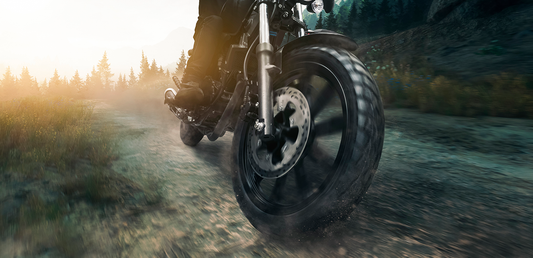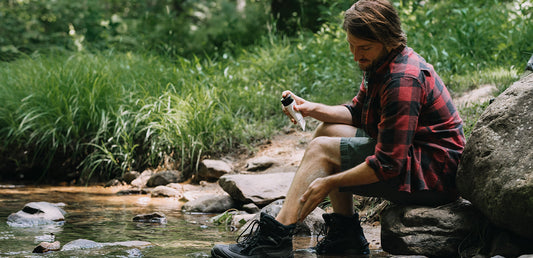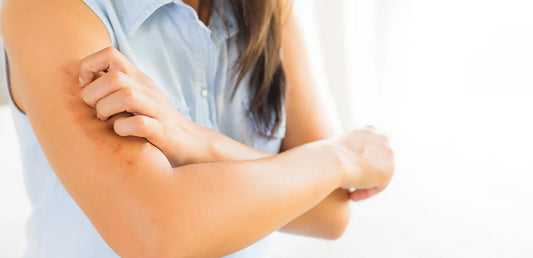
Why Your Poison Ivy Rash Isn’t Healing - and What To Do About It
You followed the “leaves of three, leave it be” rule, but somehow still ended up with an itchy rash. Maybe it got worse after a few days, or just hasn’t gone away despite trying creams and home remedies. If this sounds familiar, you’re not alone.
A poison ivy rash that won’t heal is frustrating, and often, the reason comes down to missed steps in treatment. Understanding why poison ivy lingers is key to getting the relief you need. The good news? With the right products and a complete approach, you can stop the itch and start to heal.
What is Poison Ivy and Why Does It Cause a Rash?
Poison ivy is a common plant found in most of the United States. While its leaves might look harmless, it produces an oily resin called urushiol and this is what causes the rash.
Urushiol triggers an allergic skin reaction in most people. It’s found not only on the plant’s leaves, but also on its stems and roots. Even a tiny amount of this oil can cling to your skin, clothing, gear, or pet’s fur, and continue spreading if it’s not fully removed.
Poison Ivy Rash Not Going Away? Here’s Why
If you’ve asked yourself, “Why is my poison ivy getting worse?” or searched “poison ivy rash not going away,” the answer may lie in how you’ve treated it. A lingering rash often isn’t from new exposure, it’s from residual urushiol that was never fully washed away.
That’s why it's not enough just to soothe the itch. You need to remove the source of the reaction.
Why Some Treatments Don’t Work
A lot of people turn to anti-itch creams, hydrocortisone ointments, or home remedies when a rash appears. While these can help relieve itching temporarily, they do not remove urushiol.
Without proper decontamination, urushiol stays on the skin and continues to trigger allergic reactions. This is why you may feel like the rash is spreading or flaring up again; the oil is still present.
For a truly effective poison ivy rash treatment, start with removing the oil first. This is where Tecnu makes all the difference.
Common Mistakes That Make Poison Ivy Worse
If your rash is lasting longer than it should, one of these common missteps could be the cause:
- Not washing immediately after exposure: Urushiol begins bonding to the skin within minutes.
- Using the wrong kind of soap: Regular soap can actually spread the oil instead of breaking it down.
- Recontamination: Clothing, pet fur, gear, and even car seats can harbor urushiol for days or weeks.
- Scratching the rash: Scratching can break the skin, lead to infection, and slow the healing process.
Taking the right steps early can help avoid weeks of discomfort.
How to Treat Poison Ivy the Right Way
To get real relief, you need a complete poison ivy treatment that removes the oil and soothes irritated skin. Here’s the best step-by-step method:
Step 1: Remove Urushiol
Use Tecnu Original Outdoor Skin Cleanser as soon as possible after exposure. This cleanser is designed to break the bond between urushiol and your skin, clothes, and gear.
For active rashes, Tecnu Extreme Poison Ivy Scrub provides deeper cleansing using gentle exfoliation to remove oil.
Step 2: Relieve the Itch
After cleansing, use Tecnu Rash Relief Spray to calm symptoms like redness, itching, and oozing. The non-sting formula is ideal for sensitive skin and can be used multiple times a day.
Step 3: Repeat as Needed
Depending on the severity of your exposure, you may need to repeat the process for a few days to fully eliminate any lingering urushiol.
When to Seek Medical Help
While most poison ivy rashes can be treated at home, you should see a doctor if:
- The rash is on your face, near your eyes, or in the genital area
- You see signs of infection like pus, swelling, or warmth
- You develop a fever
- The rash hasn’t improved after 10–14 days
Medical professionals can prescribe oral or topical steroids if needed for more severe reactions.
The Bottom Line: Remove the Cause, Not Just the Symptoms
If your poison ivy rash is not healing, there’s a high chance urushiol is still present. Soothing creams and lotions only go so far, true relief comes from removing the source of the reaction.
Tecnu’s proven system of urushiol removal and itch relief provides complete care from exposure to recovery. Whether you’re a weekend hiker or a backyard gardener, having the right products on hand can mean the difference between a quick recovery and weeks of discomfort.



